Introduction
Ecommerce marketing automation is a powerful tool that can revolutionize how online businesses engage with their customers. By leveraging automation technology, e-commerce companies can streamline their marketing efforts, enhance customer relationships, and drive sales growth.
With an ecommerce marketing automation platform, you can pre-program your routine marketing activities. It will assist your team to focus on the areas that will have the most impact on your business.
Ecommerce marketing automation can develop new strategies to increase customer lifetime value, expand customer loyalty efforts, develop cross-channel strategies for email and SMS campaigns, etc.
In this blog, we will delve into ecommerce marketing automation, exploring its benefits and providing real-world examples of how businesses have successfully implemented ecommerce marketing automation strategies to boost their online presence.
From abandoned cart emails to tailored product recommendations, we will showcase how ecommerce marketing automation can take your e-commerce business to the next level.
What is Ecommerce Marketing Automation?
Ecommerce marketing automation means using software to handle repetitive marketing tasks for your online store. These tasks might include sending emails, posting on social media, and personalizing customer experiences.
The key components are automated email campaigns, personalized product recommendations, and targeted advertising.
The complexity and scale of online retail create the need for ecommerce marketing automation. With thousands of customers interacting with ecommerce platforms at any given time, it's not feasible to manage these interactions manually.
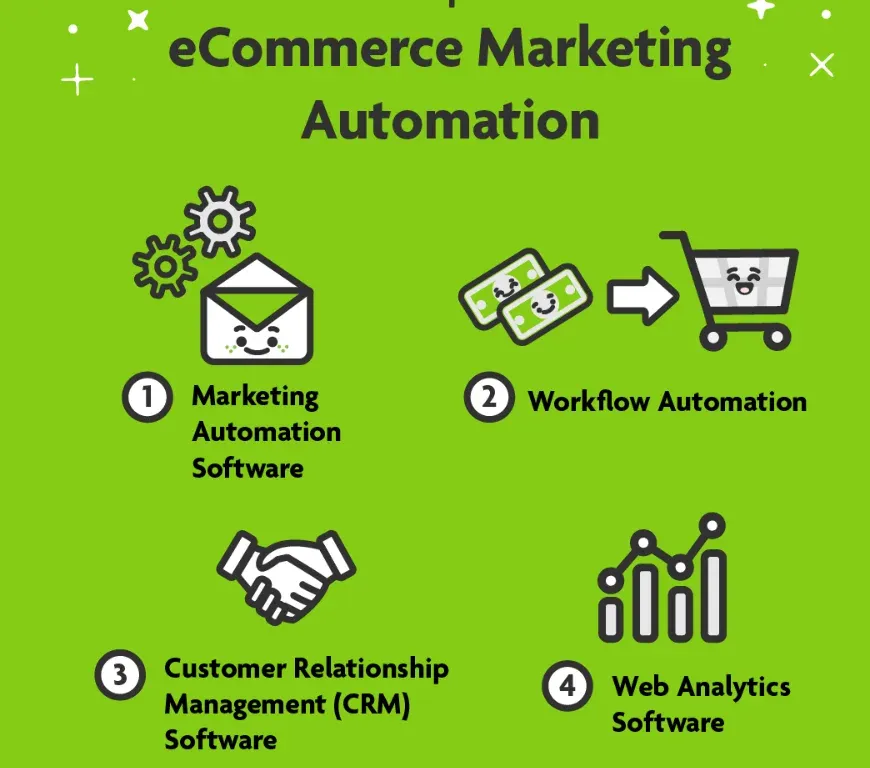
Ecommerce marketing automation enables businesses to efficiently manage and analyze large amounts of data, allowing them to develop more targeted and effective marketing strategies.
It also ensures consistency in communication and reduces the chances of human error, saving time and resources.
Moreover, automating tasks such as cart abandonment emails, personalized product recommendations, and customer segmentation helps businesses improve customer experience, increase conversion rates, and ultimately boost sales growth.
In a competitive online marketplace, ecommerce marketing automation is essential to maintain efficiency, improve customer loyalty, and stay ahead of competitors.
Benefits of Ecommerce Marketing Automation
Let's break down why ecommerce marketing automation is so awesome for your online store:

Saves Time and Effort
Ecommerce marketing automation means less manual work. You can set up your campaigns once and let the software handle the rest.
For example, instead of manually sending out welcome emails to new subscribers, you can set up an automated workflow that sends a series of personalized emails to new customers as soon as they sign up.
Improves Customer Experience
Ecommerce marketing automation tools help you deliver a better customer experience. Automated emails can welcome new customers, remind them of abandoned carts, or suggest products they might like.
For instance, if a customer abandons their cart, an automated reminder email can prompt them to complete their purchase, often including incentives like discounts to encourage the transaction.
Increases Sales and Revenue
By using Ecommerce marketing automation tools, you can increase your sales. Automated emails can encourage customers to complete their purchases or come back for more. For example, after a customer makes a purchase, you can send automated follow-up emails with recommendations for related products or accessories.
This upselling and cross-selling approach can significantly boost your average order value and overall revenue.
Enhances Targeting and Personalization
Ecommerce marketing automation allows you to target your customers more effectively. You can send personalized messages based on their behavior and preferences.
For instance, you can segment your customers based on their purchase history, browsing behavior, or demographics, and then send targeted campaigns that are tailored to their specific interests.
Suggested Reading:14 Innovative Strategies for Ecommerce Marketing Automation
Types of Ecommerce Marketing Automation
Let's see the various types of Ecommerce Marketing Automation :
Email Marketing Automation
Email ecommerce marketing automation is a useful tool for emails, It helps you send emails to customers without manual effort.
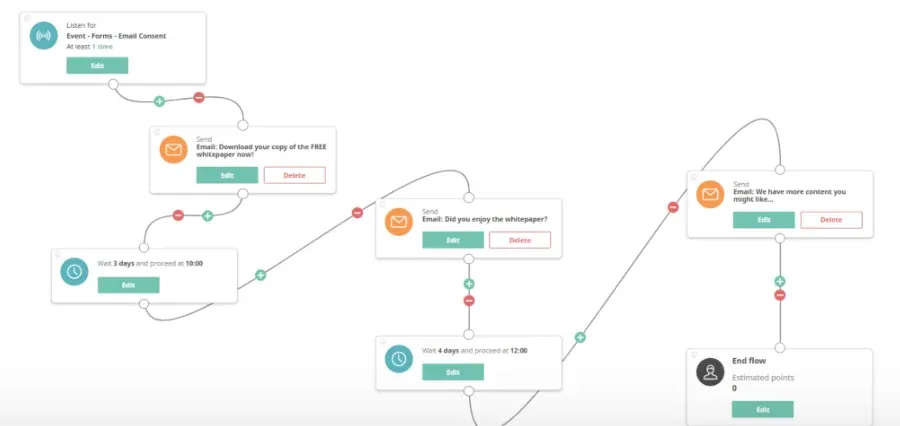
Welcome Series
When a new customer signs up, an automated welcome series can greet them. A well-crafted welcome series can make a strong first impression, encourage first-time purchases, and increase customer loyalty.
It usually includes a series of emails sent over a few days or weeks, gradually building a connection with the new customer.
Suggested Reading:9 Expert Tips for Effective Ecommerce Marketing Automation
Follow-up Emails
Follow-up emails can be sent after a purchase. They can thank the customer, suggest related products, or ask for feedback.
These emails keep your brand in the customer's mind and encourage repeat purchases. For example, a follow-up email might include a tutorial on how to use the purchased product or offer a discount on a future purchase.
This type of personalized communication shows customers that you care about their experience and value their business.
Newsletters
Newsletters keep your customers updated about new products, sales, and news. With ecommerce marketing automation, you can schedule these newsletters in advance.
This ensures that your customers receive regular updates without you having to send each one manually. A well-designed newsletter can drive traffic to your website, increase sales, and keep your audience engaged.
Social Media Automation
Social media is essential for ecommerce. Social media Ecommerce marketing automation tools help you stay active without constant effort.
Scheduled Posts
You can schedule posts to go live at the best times. This keeps your audience engaged and your brand visible.
Scheduled posts can include product promotions, user-generated content, industry news, and engaging questions to interact with your audience.
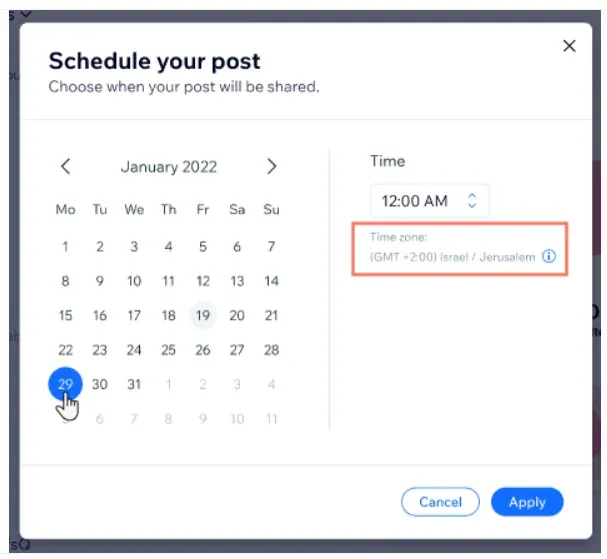
Automated Responses
Automated responses can reply to common questions instantly. This ensures your customers get quick answers, improving their experience.
For example, if a customer asks about shipping times, an automated response can provide the necessary information immediately. This reduces the workload on your customer service team and ensures that customers receive timely and accurate information.
Social Listening
Social listening tools monitor what people say about your brand. This helps you respond quickly to feedback and trends.
By tracking mentions, hashtags, and keywords related to your business, you can discover new trends in customer purchase patterns This allows you to engage with your audience more effectively and address any issues or concerns promptly.

Customer Segmentation
Customer segmentation strategy divides customers into different segments
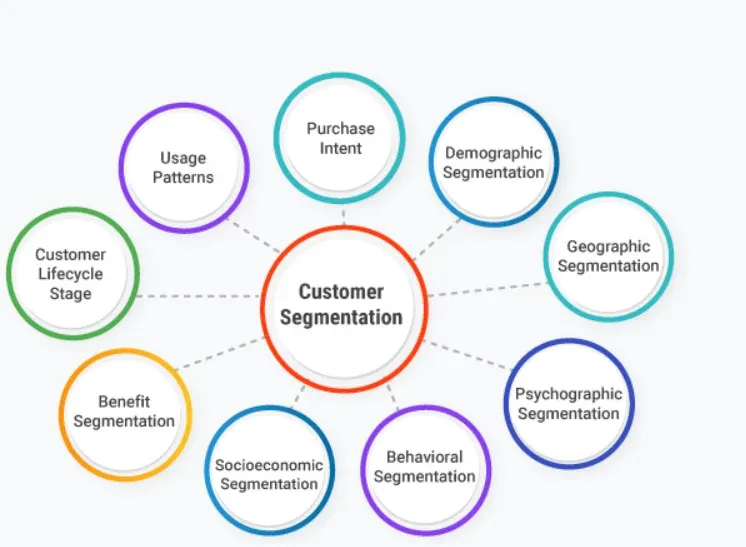
Behavior-based Segmentation
Segment customers based on their actions, like purchases or website visits. This allows you to send personalized messages that match their interests.
For example, you can create a segment for customers who have abandoned their carts and send them targeted emails with incentives to complete their purchases.
Behavior-based segmentation helps you understand what motivates different groups of customers and tailor your marketing efforts accordingly.
Demographic Segmentation
Group customers by age, location, or gender. This helps you craft campaigns that hit a nerve with the target audience. For example, you might promote different products to teenagers and older adults or create location-specific offers.
Demographic segmentation allows you to address the unique needs and preferences of different customer groups, making your marketing more relevant and effective.
Personalized Product Recommendations
Personalized recommendations can boost sales by showing customers products they'll love.
Recommendations Based on Past Purchases
Personalized product recommendations can increase the average order value and encourage repeat purchases by showing customers items that match their interests and needs.
Browsing History-based Suggestions
Use browsing history to recommend products. If a customer looks at a product multiple times, suggest it in an email or on their next visit.
This type of personalization shows customers that you understand their preferences and are paying attention to their behavior. By presenting relevant product suggestions, you can enhance the shopping experience and increase the likelihood of a purchase.
Setting Up Ecommerce Marketing Automation
Setting up ecommerce marketing automation involves selecting the right tools, integrating them with your Ecommerce marketing automation platform, and creating a strategy to achieve your marketing goals effectively.
Choosing the Right Ecommerce Marketing Automation Tools
Selecting the right ecommerce automation tools is the first step. Look for tools that fit your needs and budget.
Popular options include BotPenguin, Mailchimp, HubSpot, and Klaviyo. Make sure the tool you choose is easy to use and integrates well with your existing systems.
Integrating Automation with Your Ecommerce Platform
Now you must ensure to integrate your tool with existing systems. Whether you use Shopify, WooCommerce, or another platform, most Ecommerce marketing automation tools offer seamless integration.
This integration allows data to flow smoothly between your store and your automation tools, ensuring that your marketing efforts are timely and relevant.
Creating a Strategy and Setting Goals
Before you start automating, create a clear strategy. Define your goals, such as increasing sales, improving customer retention, or boosting engagement.
Then, plan how you will use ecommerce marketing automation to achieve these goals. For example, you might set up automated welcome emails for new customers or reminders for abandoned carts.
Real-World Examples of Ecommerce Marketing Automation
This section will explore several real-world use cases of ecommerce marketing automation :
Abandoned Cart Recovery
Use Case: Automating follow-up emails to customers who abandon their carts can recover lost sales.
Example: Amazon utilizes abandoned cart emails effectively. If a customer adds items to their cart but doesn't complete the purchase, Amazon sends a personalized email reminder with the items left behind, often including related product suggestions or a time-sensitive discount to incentivize the purchase.
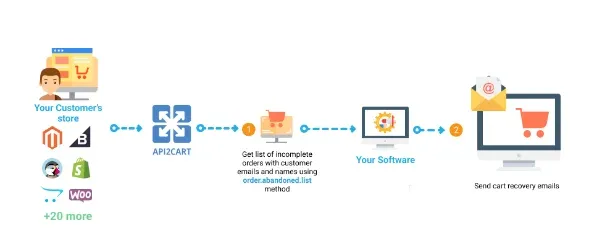
Personalized Product Recommendations
Use Case: Leveraging customer data to automate personalized product recommendations across various channels.
Example: Netflix uses marketing automation to recommend shows and movies based on viewing history. Similarly, Sephora uses customer browsing and purchase data to send personalized product recommendations through email and their mobile app, driving higher engagement and sales.
Customer Segmentation
Use Case: Automating customer segmentation to deliver targeted marketing messages.
Example: Spotify segments its users based on their music preferences and listening habits, automating personalized playlists and notifications. This segmentation strategy keeps users engaged and drives continued use of the platform.
Loyalty Program Management
Use Case: Automating the management and promotion of customer loyalty programs.
Example: Starbucks automates its loyalty program by sending personalized offers and rewards based on a customer’s purchase history and preferences. Their app pushes notifications about special promotions, new product launches, and reward point updates, encouraging repeat purchases.
Social Media Marketing Automation
Use Case: Automating the posting and management of social media content.
Example: Hootsuite enables businesses to automate social media campaigns across multiple platforms. Nike uses automated scheduling and monitoring tools to maintain a consistent presence and engage with its audience in real time, which is critical for large-scale campaigns like product launches.
Email Marketing Automation
Use Case: Automating email campaigns to nurture leads and retain customers.
Example: Zara uses email marketing automation to send personalized content, including product recommendations, special offers, and new arrivals, based on customer purchase history and browsing behavior. This automation keeps customers engaged and drives conversions.
How do big companies leverage ecommerce marketing automation?
We'll see examples of how big companies like Amazon and Starbucks leverage marketing automation :
Amazon: Revolutionizing E-commerce Marketing Automation
Amazon uses different ways to make use of ecommerce marketing automation :
Personalized Recommendations: Amazon uses advanced AI algorithms to analyze customer data, including browsing history, past purchases, and wish lists.
These insights power the recommendation engine, which suggests products that customers are most likely to buy. This strategy contributes to 35% of Amazon’s total revenue.
Automated Email Marketing: Amazon employs automated email campaigns to re-engage customers. For example, if a customer abandons their cart, the system sends reminder emails, often with personalized discounts or related product suggestions, which help recover lost sales.
Dynamic Pricing: Amazon’s dynamic pricing strategy automatically adjusts product prices in real time based on demand, competitor prices, and other variables.
This automation ensures competitive pricing and maximizes profit margins, enhancing both customer satisfaction and brand loyalty.
Starbucks: Crafting Personalized Customer Experiences
Starbucks uses different ways to make use of ecommerce marketing automation :
Personalized Offers Through Mobile App: Starbucks uses its mobile app to track customer preferences and purchase history.
The data collected enables the automation of personalized offers, such as discounts on favourite drinks or timely reminders to order ahead during peak times, boosting customer engagement.
Predictive Analytics for Ordering: The “Order Ahead” feature in the Starbucks app uses machine learning to predict and suggest the customer’s frequently ordered items.
This automation streamlines the ordering process, improves convenience, and encourages repeat purchases.
Automated Loyalty Rewards Program: Starbucks automates its rewards program by sending personalized rewards based on individual spending habits.
This continuous engagement fosters customer loyalty and increases the average transaction value.
Walmart
Walmart uses different ways to make use of ecommerce marketing automation :
Personalized Promotions: Automated email and SMS campaigns based on customer behaviour and purchase history.
Inventory Management: Predictive analytics and automated reordering to maintain optimal stock levels.
Seasonal Campaigns: Automated management of seasonal promotions and targeted ads.
Customer Insights: Data-driven insights to refine marketing strategies and offers.
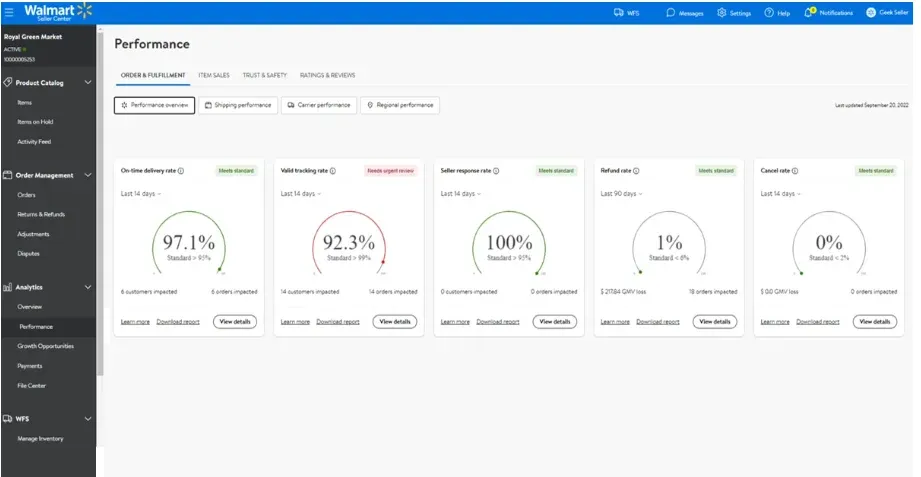
Alibaba
Alibaba uses different ways to make use of ecommerce marketing automation :
Product Recommendations: Automated personalization based on user search history and purchase patterns.
Re-engagement Campaigns: Automated emails with personalized offers and new arrival updates.
Customer Service: AI-driven chatbots for routine inquiries and personalized assistance.
Marketplace Management: Efficient handling of extensive product listings and user interactions through automation.

Best Practices for Ecommerce Marketing Automation
Best practices for ecommerce marketing automation help ensure your strategies are effective and efficient. These practices include segmenting your audience, A/B testing, analyzing data, and continuous improvement.
Segmenting Your Audience
Divide your customers into groups based on their behavior, preferences, or demographics. This allows you to send personalized messages that resonate with each group.
Example: Send special offers to loyal customers, and welcome emails to new subscribers.
A/B Testing
A/B testing is a valuable practice in Ecommerce marketing automation. Test different versions of your emails, social media posts, or landing pages to see which performs better.
This helps you optimize your campaigns for maximum effectiveness.
Example: Try different subject lines in your emails to see which gets a higher open rate. Use the results to refine your future email campaigns.
Analyzing Data and Metrics
Regularly analyze data and metrics to understand how your Ecommerce marketing automation tools are performing.
Example: If you notice a drop in email open rates, investigate the cause and test new strategies to improve them. Continuous monitoring ensures your automation efforts stay effective.
Challenges Associated with Ecommerce Marketing Automation
Now let's discuss some major challenges and concerns associated with ecommerce marketing automation :
Data Integration and Management: Integrating various data sources, such as customer behavior, purchase history, and demographic information, can be complex.
Ensuring that this data is accurate, up-to-date, and easily accessible for automation tools is a significant challenge.
Personalization at Scale: While automation allows for personalized marketing, achieving this at scale without losing the personal touch can be difficult.
Over-automation may lead to generic messages that fail to resonate with customers.
High Initial Costs and Implementation: Setting up an effective marketing automation system often requires a significant upfront investment in software, tools, and training. Additionally, the implementation process can be time-consuming and technically challenging.
Maintaining Customer Engagement: Automated campaigns, if not carefully managed, can lead to customer fatigue due to excessive or irrelevant communications.
Striking the right balance between frequency and content is essential to keep customers engaged without overwhelming them.
Complexity of Multichannel Coordination: Coordinating marketing efforts across multiple channels (email, social media, SMS, etc.) can be challenging. Ensuring consistent messaging and timing across these channels requires careful planning and execution.
Data Privacy and Compliance: With increasing concerns over data privacy, ensuring that automated marketing practices comply with regulations like GDPR can be a challenge. Businesses must be vigilant about how they collect, store, and use customer data.
Measuring ROI and Effectiveness: Assessing the true effectiveness of marketing automation campaigns can be difficult.
Businesses need to establish clear metrics and continually analyze performance to ensure that their automation efforts are driving the desired results.
Future Trends in Ecommerce Marketing Automation
Here are some future trends in eCommerce marketing automation:
Personalization at Scale: Advanced AI algorithms will enable hyper-personalized marketing campaigns, tailoring content to individual consumer preferences and behaviors.
AI-Powered Chatbots and Virtual Assistants: Enhanced chatbots, like BotPenguin, provides real-time customer support and product recommendations, improving user experience and increasing conversion rates.
Omni-Channel Automation: Integration of marketing efforts across various platforms, including social media, email, and SMS, to create a cohesive and seamless customer journey.
Predictive Analytics: Utilizing data to predict future customer behavior, allowing for proactive marketing strategies and improved inventory management.
Voice Search Optimization: With the rise of voice-activated devices, optimizing content for voice search will become essential for eCommerce marketers.
Dynamic Content Delivery: Automated systems will deliver dynamic content based on real-time user data, enhancing engagement and retention.
Sustainability and Ethical Marketing: Automation tools will help brands communicate their sustainability efforts, aligning with consumer demand for ethical products.
Conclusion
In conclusion, e-commerce marketing automation is a transformative approach that streamlines and enhances the way businesses interact with their customers.
By leveraging automated tools and technologies, companies can deliver personalized experiences, improve operational efficiency, and ultimately drive higher conversion rates.
Ecommerce marketing automation is rapidly evolving, shaping the future of online retail. By 2025, 80% of businesses are expected to fully automate their marketing efforts, enhancing customer experiences and operational efficiency. AI-driven personalization is leading the charge, with 72% of consumers only engaging with personalized marketing messages.
Examples such as automated email campaigns, personalized product recommendations, and dynamic social media advertising illustrate the diverse applications and benefits of E-commerce marketing automation.
As consumer expectations continue to rise, adopting these strategies is not just an option but a necessity for staying competitive in the digital marketplace. Investing in e-commerce marketing automation can lead to improved customer satisfaction, increased sales, and a more efficient marketing process.
Moreover, a carefully curated Ecommerce marketing automation strategy can streamline the workflow of your current organization, reduce workload on employees from repetitive tasks, and provide higher employee satisfaction too.
So what are you waiting for? Plan your Ecommerce marketing automation strategy today and transform the cards of your business!
Frequently Asked Questions(FAQs)
What is Ecommerce marketing automation?
Ecommerce marketing automation refers to using software to automate marketing tasks, streamline processes, and deliver personalized customer experiences. It enhances efficiency, targeting, and engagement, leading to increased sales and customer satisfaction.
How does Ecommerce marketing automation benefit businesses?
Ecommerce marketing automation benefits businesses by improving efficiency, reducing manual effort, enhancing customer targeting, and personalizing marketing efforts. This leads to higher conversion rates, increased sales, and better customer retention.
What are some common examples of ecommerce marketing automation?
Common examples include automated email campaigns, personalized product recommendations, dynamic social media ads, abandoned cart reminders, and customer segmentation for targeted marketing. These tools enhance customer engagement and drive sales.
How can personalized product recommendations boost sales?
Personalized product recommendations use customer data to suggest relevant products, increasing the likelihood of purchases. This personalized approach enhances the shopping experience and boosts conversion rates.
What role do chatbots play in e-commerce marketing automation?
Chatbots handle customer inquiries, provide instant support, and guide users through their shopping journey. They improve customer service efficiency, reduce response times, and enhance user experience.
How does predictive analytics enhance e-commerce marketing?
Predictive analytics uses data to forecast customer behaviour and trends, enabling businesses to make informed marketing decisions. This improves targeting, optimizes marketing strategies, and increases conversion rates.



